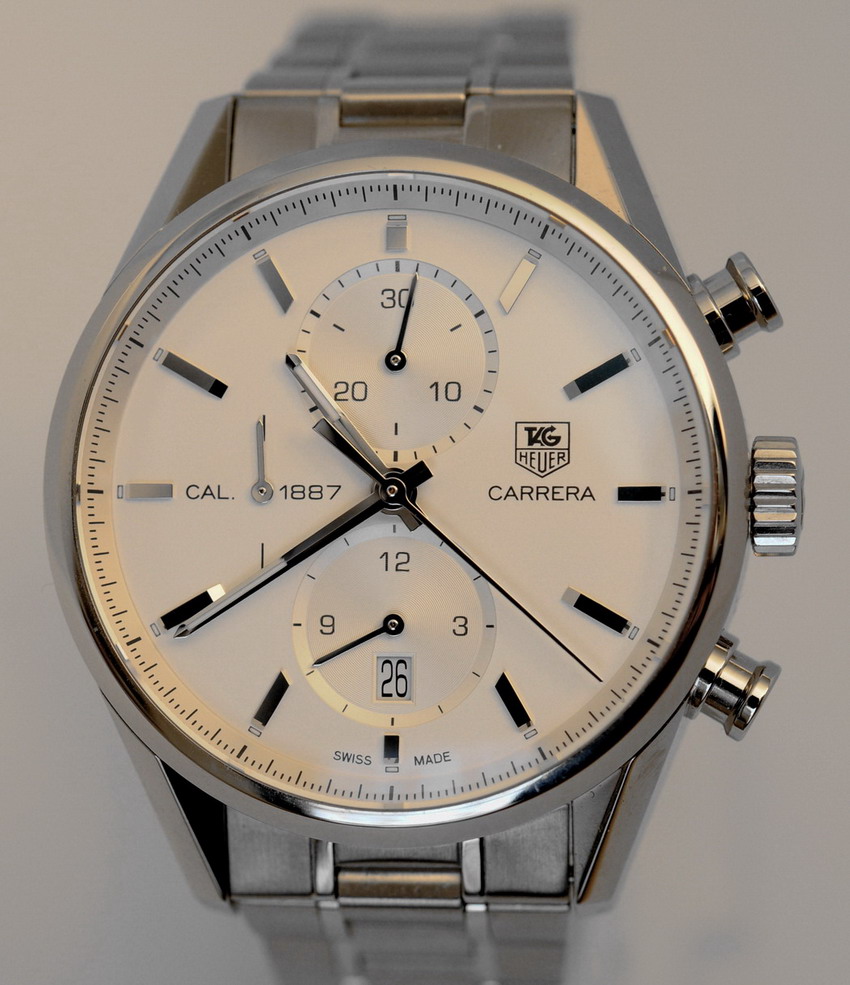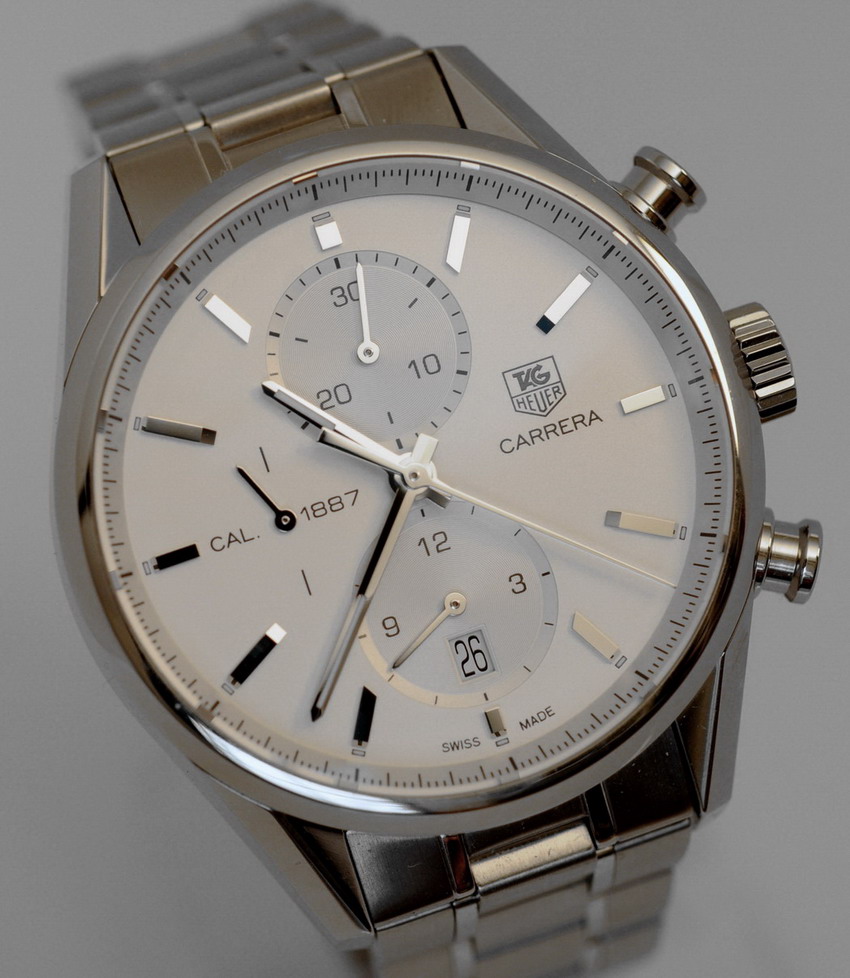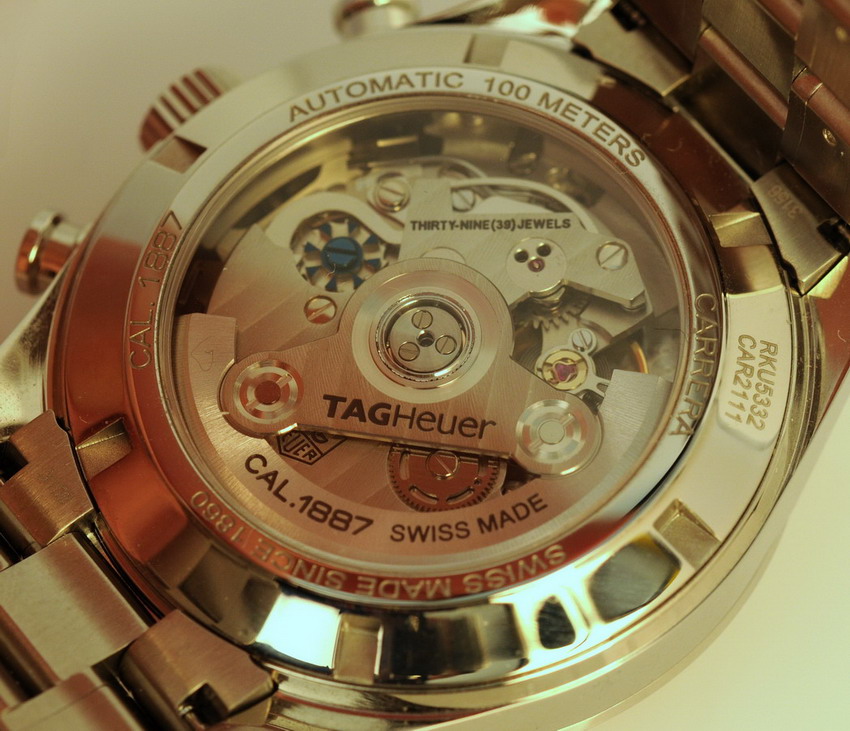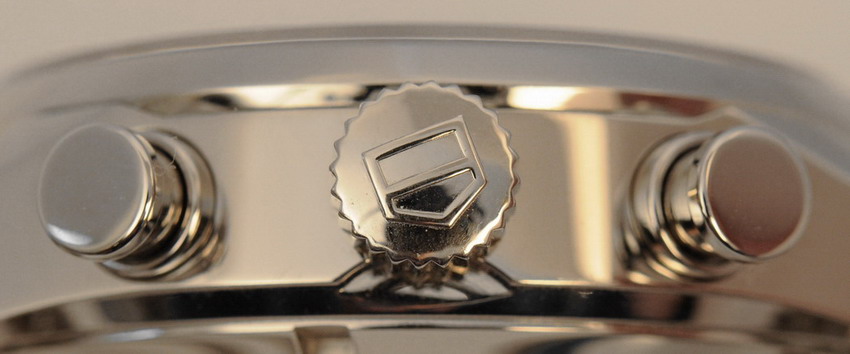|
The
Present: TAG Heuer Carrera Calibre
1887.
The
Carrera Calibre 1887 is the first chronograph to
use TAG Heuer's newly-introduced Calibre 1887
movement, an in-house movement that is expected to
become the mainstay of TAG Heuer's line of
chronographs. The Calibre 1887 movement is an
integrated movement, featuring a classic column
wheel construction, with an oscillating pinion to
engage and disengage the chronograph (a technology
developed and patented by Edouard Heuer in 1887,
which explains the designation of this new
calibre). The 13 ligne movement has 39 jewels, with
a power reserve of 50 hours and a balance frequency
of 28,800 beats per hour. TAG Heuer produces the
movement's main plate, bridges, column wheel and
oscillating weight at its industrial facility,
based in Cornol, Switzerland, and sources other key
components (including the balance spring, the
pallets and escape wheel) from Nivarox, a leading
Swiss producer of escapement parts.
But
enough about the history of the Carreras . . . that
has been written before. And enough about the new
Calibre 1887 movement . . . we can put it under the
microscope sometime soon. Let's have a look at this
fantastic chronograph.
When
I first put it on my wrist, I realized that the
Carrera Calibre 1887 is today's rightful successor
to the Carreras of 1964. Having worn it for two
days, I am confident that the Carrera Calibre 1887
lays the groundwork for the next generation of
Heuer chronographs.

The
Carrera Calibre 1887 is a beautiful chronograph,
taking the defining elements of the 1960s Carreras,
and incorporating them into a state-of the-art
chronograph. One by one, we see the key elements of
the vintage Carreras transferred from the 1964
Carrera into the form factor required to house a
modern movement. Count them off, one-by-one, the
key elements that made the original Carrera the
icon of simplicity and functionality . . twelve
simple applied markers for the hours, yes; polished
stainless steel matchstick hands, yes: inner bezel
marked for minutes and 1/5 seconds, yes (although the Cal 1887 shows 1/4 second divisions, consistent with the 28,800 VPH movement); stainless
steel case with distinctive angled lugs, yes. It's
all here, and while the combination of design
components from one era to the next will not always
result an object that reflects beauty of the
original object, it all works with the Carrera
Calibre 1887. This chronograph looks as though it
was drawn by the very same hand that drew the first
Carreras, almost 50 years ago, and that is high
praise indeed.
The
Carrera Calibre 1887 is offered with a white or
black dial, on a strap or stainless steel bracelet.
The watch is waterproof to 100 meters, with
sapphire crystals front and rear, and features a
quick-set date and hack setting.

The
key difference between the 1960's Carreras and the
Carrera Calibre 1887 is in the size of the
chronograph. The 1960s Carreras measured 35.5
millimeters across the dial, 45 mm lug-to-lug, and
had a thickness of 12.5 mm from the top of the
crystal to the back of the case. The Carrera
Calibre 1887 measures 41 mm across the dial and
49.5 mm lug-to-lug, with a thickness of 15.5 mm.
But let me assure you -- as someone who probably
spends as much time as anyone wearing the Carreras
from the 1960s -- the geometry of the Cal 1887 is
perfect, the proportions are right, the balance is
there. Think of the Carrera Caliber 1887 as a
Carrera from 1964, with its dimensions
appropriately enlarged to suit modern style
preferences (and to house the new Calibre 1887
movement).

Mechanically,
the Carrera Calibre 1887 appears to be superb. The
watch kept good time in its first two days on the
job, within three seconds per day. The start / stop
/ reset on the chronograph feels perfect, light
enough that it feels like a precision instrument,
firm enough that you know that you are starting and
stopping the chronograph.

|